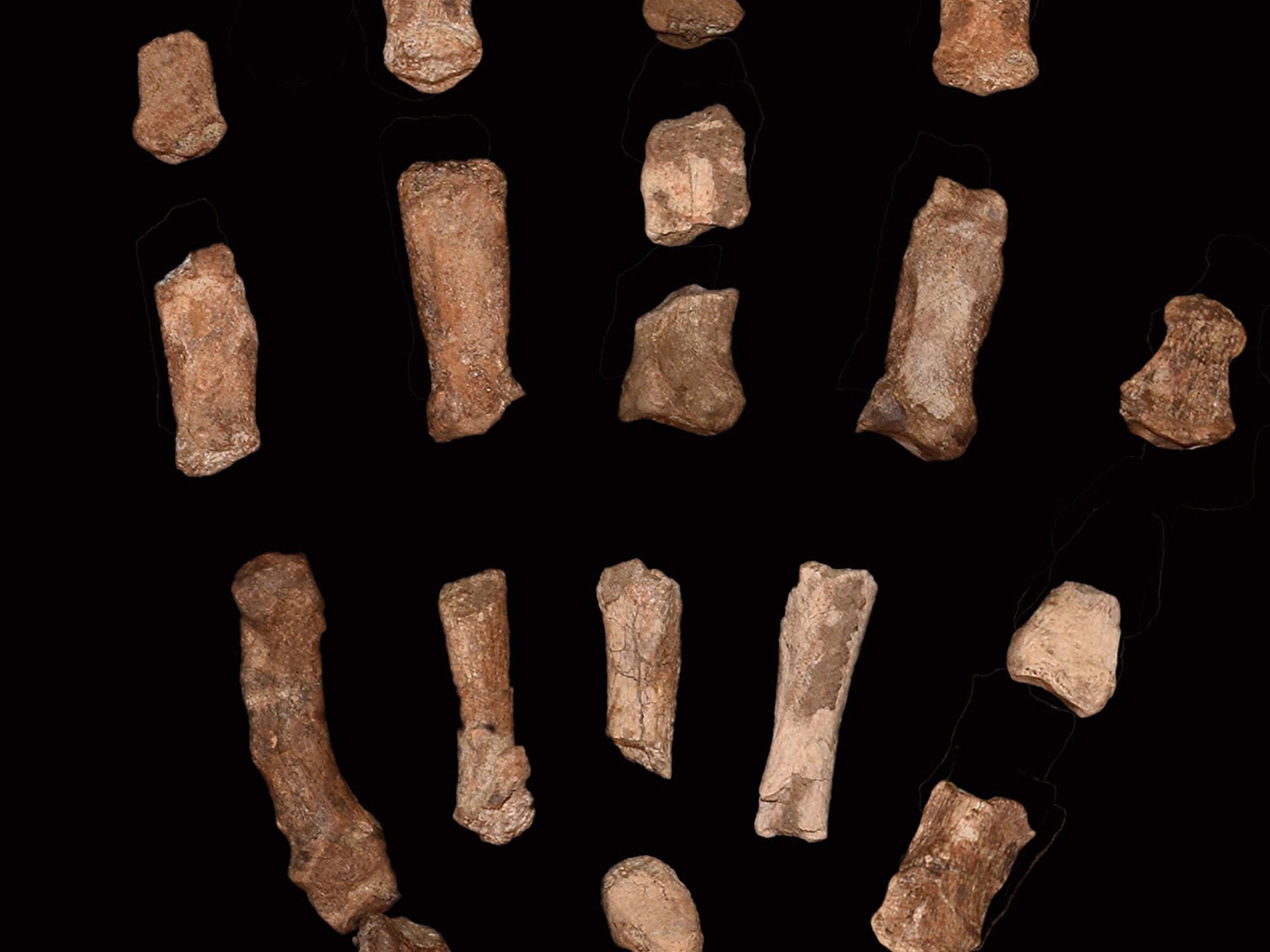
Our Fishy Ancestors Had Fins Made for Walking
One of the first creatures to live on land sported surprisingly strong hips and fins.
One of the first "fish" to walk on land some 375 million years ago made its way with surprisingly strong hips and fins, report paleontologists.
Unearthed in the Canadian Arctic in 2006, Tiktaalik roseae, a genus of early land-walking fish, made headlines with news of its discovery, which was funded by the National Geographic Society. The new report fleshes out how our ancient four-limbed ancestors first made the move from water to land. (See pictures: "Nine Fish With 'Hands' Found to Be New Species.")
"They're big—the hips of Tiktaalik look very robust," says University of Chicago paleontologist Neil Shubin, who led the study, published in the Proceedings of the National Academy of Sciences.
The find suggests that the pelvic girdle changes that accompanied the move to land by vertebrates—animals with backbones such as Tiktaalik—"started in the water or, more accurately, in the swamp," he says. (Also see "Pictures: 'Walking' Fish a Model of Evolution in Action.")
Tiktaalik lived in marshy river settings resembling today's Amazon. Up to 9 feet (2.7 meters) long, the lobed fish hunted like a freshwater crocodile in rivers and inlets, and had a surprisingly agile neck and primitive lungs.
"We are really just getting a glimpse into one of the most fascinating transitions for vertebrates," says paleontologist Catherine Boisvert of Australia's Monash University.
A series of discoveries, including Tiktaalik and similar creatures over the past decade, she says, are opening up to scholars the time when animals—other than insects—first made the leap to land.

Tale of Tiktaalik
Tiktaalik means "large, freshwater fish" in the language of the Nunavut people, who live in the region near its discovery site on Canada's frigid Ellesmere Island (map).
Shubin has nicknamed Tiktaalik the "fishapod," a play on the scientific "tetrapod" designation given to all four-legged animals and their descendants. (See also: "Tiktaalik Discovery Among National Geographic's Top Grants.")
"Our original discovery of Tiktaalik was so big that we had to split it into two parts, because we didn't have enough plaster," Shubin says. "This was the back end, and we were surprised to find a pelvis inside."
In addition to being much larger, proportionally, than the rear fin-supporting pelvis bones of a fish, Tiktaalik's hips point outward, more like a land animal's. The suspicion is that the creature propelled itself over mud flats and shallows with large, surprisingly well-articulated rear fins.
Until now scholars have known very little about the anatomical bridges between ancient fish and the much larger land creatures that came later, notes paleontologist Per Ahlberg of Sweden's Uppsala University.
"With the Tiktaalik material the preservation is so good that it will be possible to reconstruct aspects of the pelvic-fin musculature and the range of movement of the fin," Ahlberg said by email.
"This will really help us to understand the locomotory transformation from fish to tetrapod."
Land Dwellers
Why fish made the move to land 395 million years ago remains a bit of a mystery, says Boisvert. At the time, the ancient supercontinent of Gondwana was drifting toward the proto-North American continent. (Also see "Oldest Animal Discovered—Earliest Ancestor of Us All?")
"This drift created many shallow-water habitats, hence perfect places for something crocodile-like to thrive," she says. "These environments are also at the equator at that time, so it is nice and warm and tropical."
But there wasn't a lot to eat on land at the time for Tiktaalik, aside from spiders, scorpions, insects, and a few plants. Fewer predators or a safer place to lay eggs may have instead driven land creatures to evolve, some suggest.
"What we are seeing is that the transition to land was a real transition, not from the sea to land in one fell swoop," says Shubin, author of Your Inner Fish: A Journey Into the 3.5-Billion-Year History of the Human Body.
"Creatures moved from open water to shallows, to marshes, to edges, before moving to land in a long, slow transition."
Follow Dan Vergano on Twitter.




